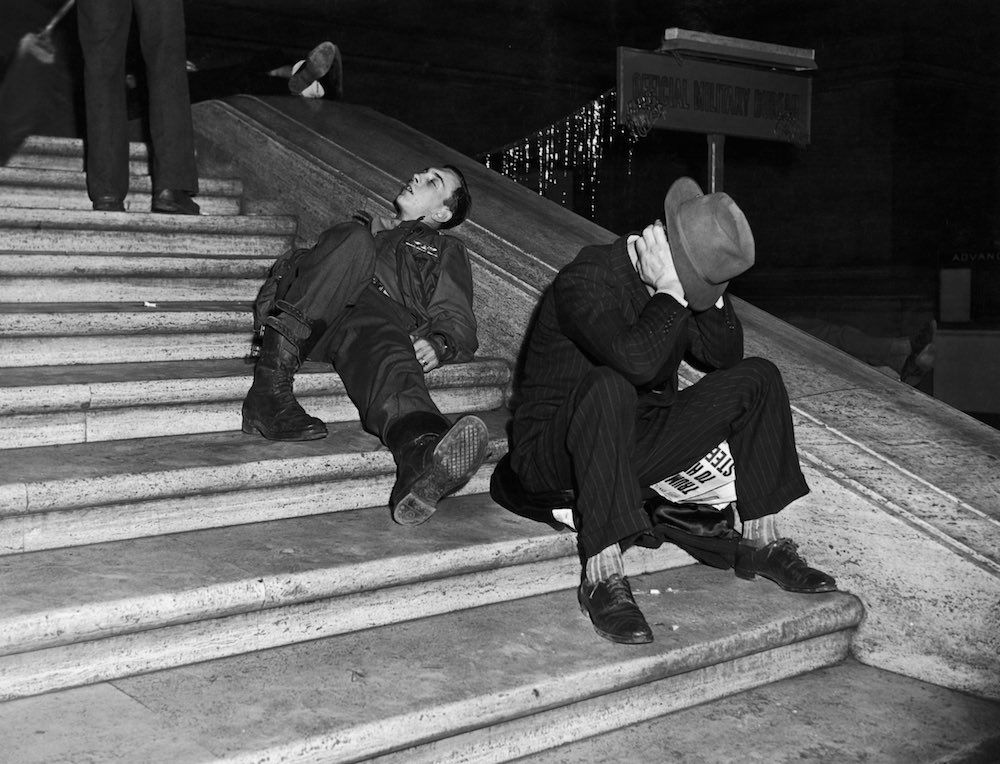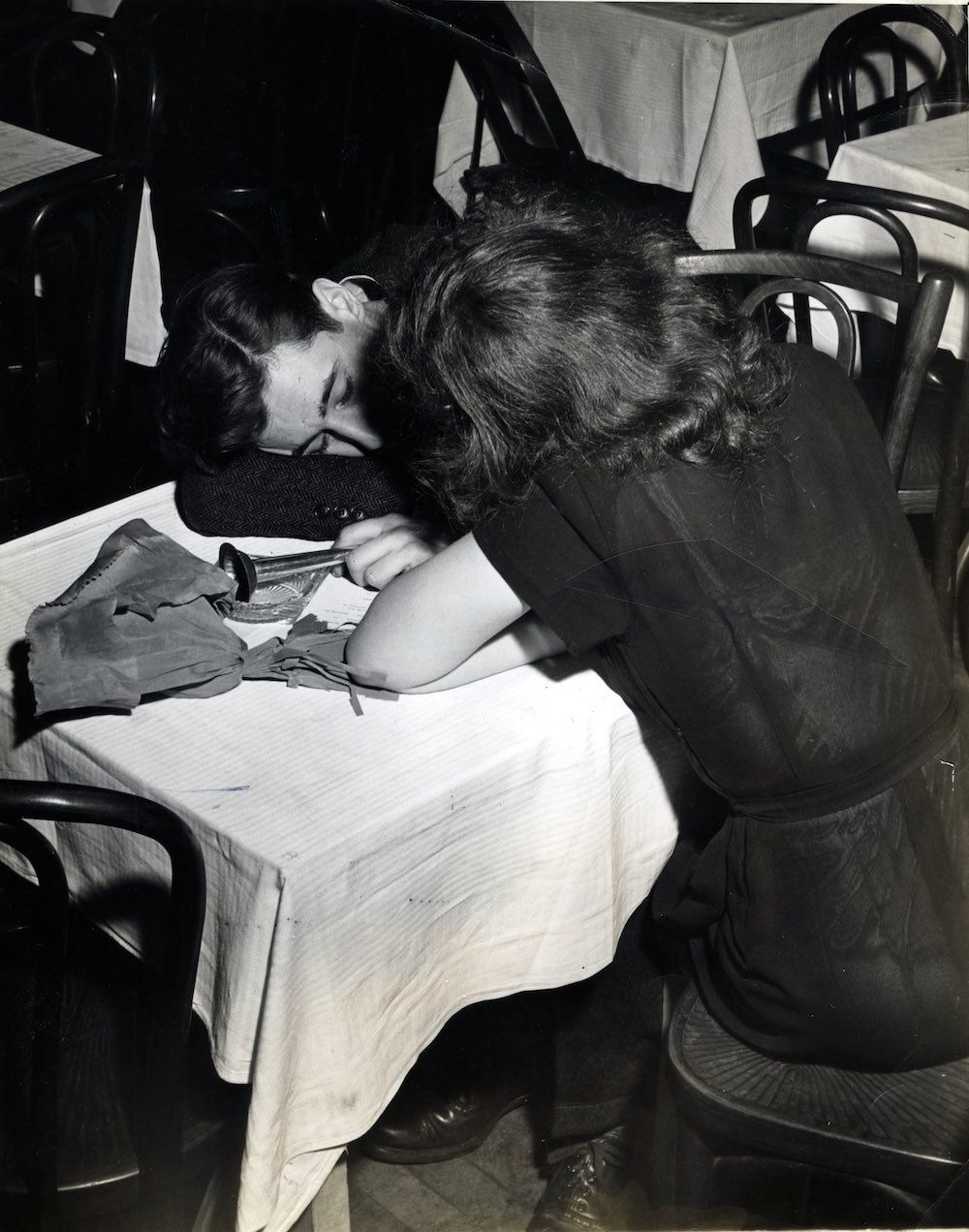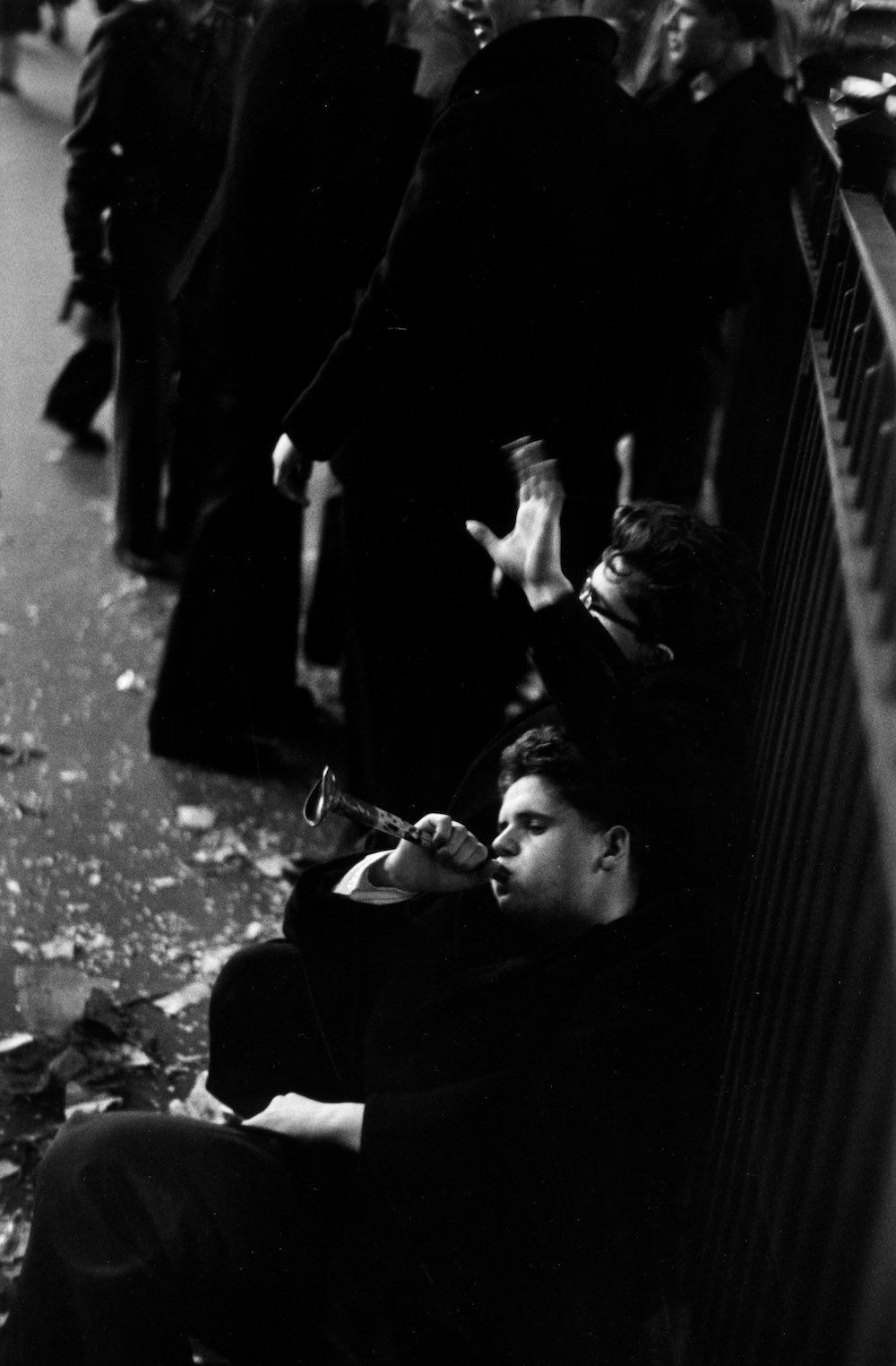After the party, the scenes of devastation and dereliction as New Yorkers mark New Year’s Day with a vow never to drink again. Why do we do it? Leo Tolstoy mused on ‘Why Do Men Stupefy Themselves?‘ in a preface to a book on “drunkenness” by Russian physician named P. S. Alexeyev:
What is the explanation of the fact that people use things that stupefy them: vodka, wine, beer, hashish, opium, tobacco, and other things less common: ether, morphia, fly-agaric, etc.? Why did the practice begin? Why has it spread so rapidly, and why is it still spreading among all sorts of people, savage and civilized? How is it that where there is no vodka, wine or beer, we find opium, hashish, fly-agaric, and the like, and that tobacco is used everywhere?
Ask anyone why he began drinking wine and why he now drinks it. He will reply, “Oh, I like it, and everybody drinks,” and he may add, “it cheers me up.” Some those who have never once taken the trouble to consider whether they do well or ill to drink wine may add that wine is good for the health and adds to one’s strength; that is to say, will make a statement long since proved baseless.
There must be some other reason…
…
The cause of the world-wide consumption of hashish, opium, wine, and tobacco, lies not in the taste, nor in any pleasure, recreation, or mirth they afford, but simply in man’s need to hide from himself the demands of conscience…
A man when sober is ashamed to go after a prostitute, ashamed to steal, ashamed to kill. A drunken man is ashamed of none of these things, and therefore if a man wishes to do something his conscience condemns he stupefies himself.
…
In a word, it is impossible to avoid understanding that the use of stupefiers, in large or small amounts, occasionally or regularly, in the higher or lower circles of society, is evoked by one and the same cause, the need to stifle the voice of conscience in order not to be aware of the discord existing between one’s way of life and the demands of one’s conscience.
Aldous Huxley was more open to additives:
We love ourselves to the point of idolatry; but we also intensely dislike ourselves — we find ourselves unutterably boring. Correlated with this distaste for the idolatrously worshipped self, there is in all of us a desire, sometimes latent, sometimes conscious and passionately expressed, to escape from the prison of our individuality, an urge to self-transcendence. It is to this urge that we owe mystical theology, spiritual exercises and yoga — to this, too, that we owe alcoholism and drug addiction.
Never again to drink? AAGill recalled a time in rehab for his alcoholism:
The moment I saw that the promises of a new life might just perhaps apply to me was late one night in the dorm after lights out. We were talking quietly. I felt pleasantly sleepy and the voices coming out of the dark made me feel safe. The chap who now slept in the bed by the door was a young tramp from the Midlands. He spoke with a slow Brummie accent. He was in a terrible state, very close to death. He started telling us his story. Until two years previously he had lived with his widowed mother, drinking whatever he could get his hands on. He ran out of money and his mother refused to give him another penny. One Monday morning, Mother took her widow’s mite to the cash-and-carry, leaving her son desperate and thirsty. He called a local junk shop and told them his mother had just died and could they please take away her belongings for cash. With £200 in his pocket he left a home containing nothing except a brief note saying sorry. The money was soon exhausted. He ended up living in a public lavatory in the centre of Birmingham, begging and stealing. Finally, he arrived in treatment via a casualty ward. Why, I asked, if he had no commitments, had he decided to live in a public loo in Birmingham? ‘Oh. I did manage to get away at the weekends,’ he said. ‘I had a little place in the country – a telephone box outside Milton Keynes.’

Jan. 1, 1952 – The Bowery – he wasn’t able to get a seat to celebrate New Year’s Eve at Sammy’s Bowery Follies in New York.
Via: Mashable.
Would you like to support Flashbak?
Please consider making a donation to our site. We don't want to rely on ads to bring you the best of visual culture. You can also support us by signing up to our Mailing List. And you can also follow us on Facebook, Instagram and Twitter. For great art and culture delivered to your door, visit our shop.














